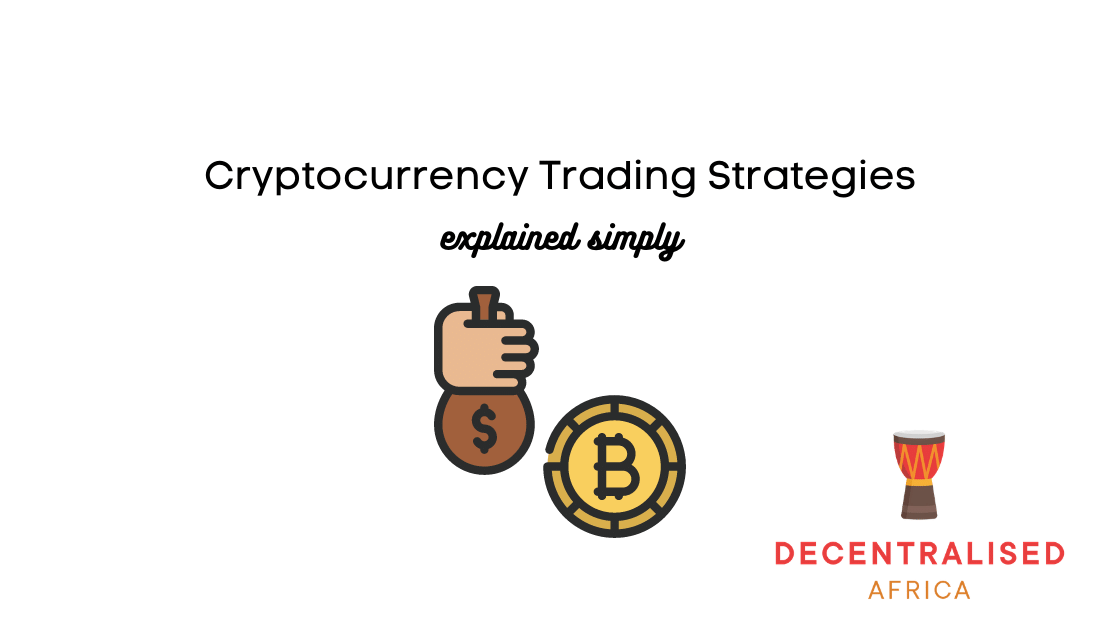
Different types of cryptocurrency trading strategies
Different types of digital currency trading strategies explained.
Many people are interested and want to participate in crypto trading now more than ever before. This could be a result of the new all time highs that digital assets such as Bitcoin have recently reached. Euphoria and FOMO are typical following such surges in price and that’s the first and most important thing people need to note: there are many risks associated with crypto trading.
Digital asset trading has become attractive because of the potential upside due to the high levels of volatility in crypto markets. As a result of people having access to quality information on how to make profit from trading, a lot of more people are trying their hand at different types of crypto trading using a variety of strategies, some which we’ll explore below. There are several strategies that traders can use, depending on their needs and circumstances. We categorize the strategies as short term, medium term, and long term.
Day Strategy
This refers to the buying and selling of crypto assets within a same day duration. Therefore, a trader enters and exits trading positions within that short time, benefitting from price changes which take place within that period. As a fact, day traders do not keep positions open throughout the night. They are afraid that major changes in prices may occur during that time, resulting in losses.
Day trading, sometimes called intraday trading, is a short-term trading strategy. The good thing is that a trader can open and close many trades during the day. For example, Mike buys 1000 XRP at $2.00 each at 9.00 am and sells them at 12.00 noon at a price of $2.20. With this strategy, a trader makes a small profit per trade. However, if he/she executes several trades within a day the aggregated profit is reasonable.
Scalping
Scalping is a very short-term trading strategy where traders have potential to generate huge profits quickly. The participants capitalise on short time changes in prices. With this method, an individual opens and closes a trade within a short time frame such as fifteen minutes. However, he/she executes many such trades within a day. Although the profit per trade could be small, it may add up to an attractive sum total.
Despite the high risk, it remains the most popular strategy to date.
Swing trading
With this strategy, the trader holds the assets for a period longer than one day. Usually, he/she makes one trade within 1 to 5 five days. But can keep the position open for more days or even weeks, benefiting from larger price fluctuations. Notably, this is the best strategy for beginners, as they can choose suitable time to exit a position. In order to make decisions, the trader focuses attention on daily and weekly chart patterns.
An interesting fact is that these traders do not sit and watch the charts all day. This is because the strategy depends on natural swings of price cycles. In addition, although a trader can use stop losses, they should not be tight ones.
HODling
Using the HODling strategy, traders buy large amounts of a cryptocurrency and hold them for a very long time, waiting for prices to go up. As a result, a trader can keep his/her cryptocurrency for years. Essentially, this is a useful strategy for cryptocurrencies like Bitcoin, which have high price volatility but historically have reached higher highs even after market retracements of up to 80% during their bull and bear cycles .
News-based trading
There are traders who capitalize on sensitive news or market sentiment to make successful trades. To do so, they should identify high-impact news and react to them. For example, a natural disaster or war can force prices of assets to go down, prompting traders to buy the cryptocurrencies during such periods and sell them when prices rise again.
On the other hand, news of adoption of cryptocurrencies as a payment method by merchants or large organizations makes their prices increase, luring some traders to sell their assets.
Position trading
Position traders base their trading decisions on long-term movements in prices of cryptocurrencies. Therefore, trades span for several weeks, months or even years. They usually use weekly and monthly price charts to make their decisions. Minor fluctuations in prices or pull-backs do not influence their decisions much. They only focus on major trends from which they realize large gains for their trades.
Arbitrage
A trader buys a cryptocurrency from an exchange with a cheaper price and sells it in an exchange with a higher price. He/she benefits from the price differences between the exchanges. The profit may be large if the trader has huge capital for such deals. As you can see, with arbitrage the trader should time very well. One should buy and sell within a brief space of time, if possible simultaneously.
Automated trading
Traders can use bots to automate their trades. This is because bots can react immediately to price changes. Interestingly, bots can handle trades for someone while he/she is asleep. However, since bots are artificial, they do not figure out best trading strategies when circumstances change.
Conclusion
In a nutshell, there are different trading strategies. Although we only mentioned the most popular ones, there are other strategies such as hedging, trend trading, and breakout trading. You can learn more about trading cryptocurrencies at Crypto University.







